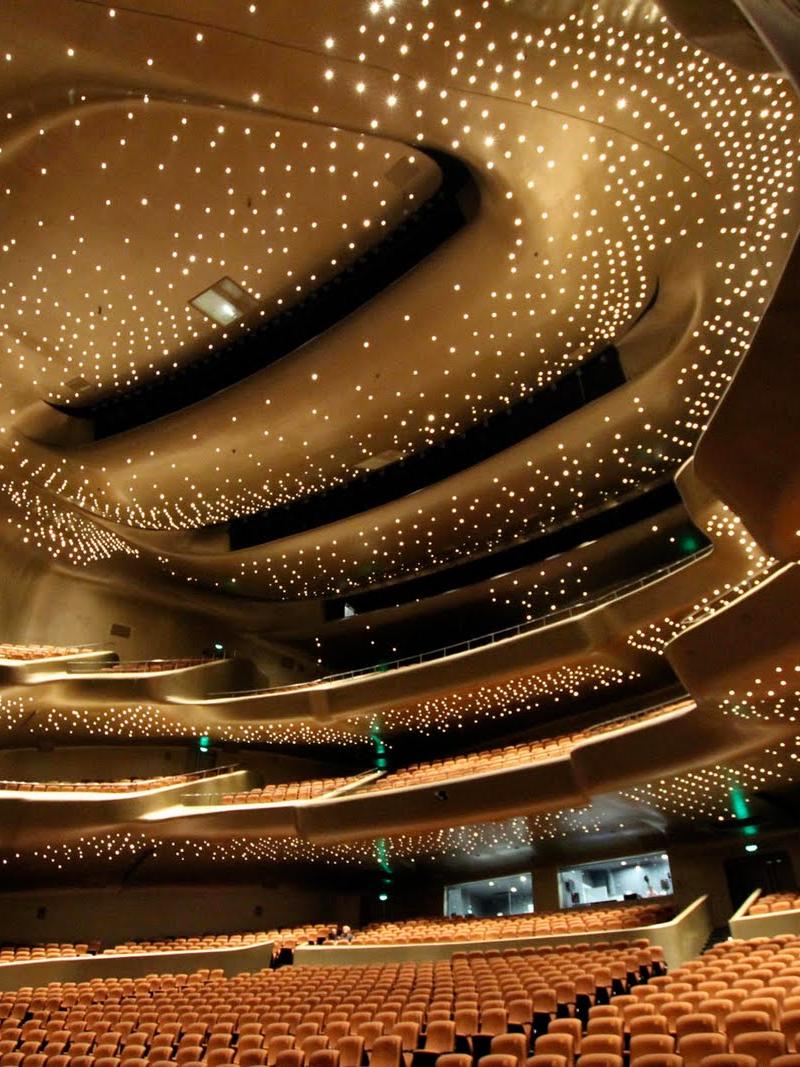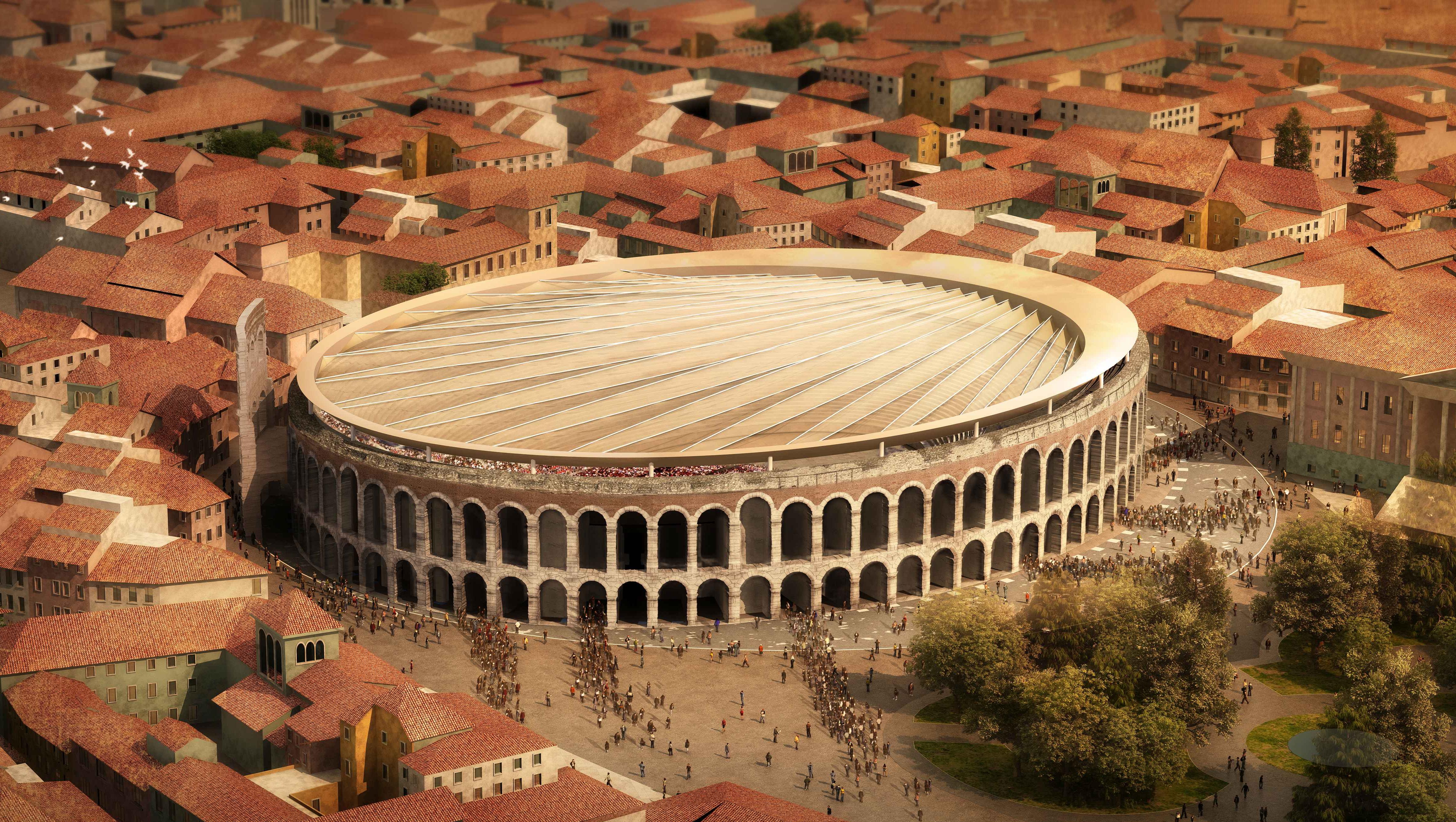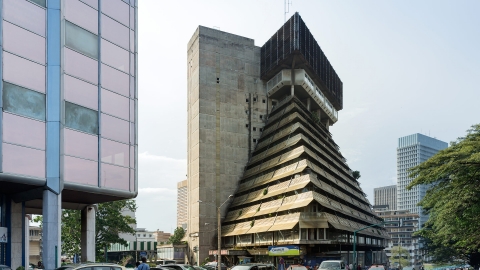Not only are opera houses a place to enjoy grand concerts, they also offer tourists the opportunity to admire and explore buildings designed by talented architects.
Whether coming to see a concert or for sightseeing purposes, opera houses are tourist attractions and even become symbols of the country itself.
Seebühne Theatre (Austria)
With its impressive and grand design, the Seebühne is considered one of the most beautiful theaters in the world. Seebühne means “sea stage” in German, and that is perhaps the most appropriate name as this theater is built on the shores of Lake Constance. During performances, the lake is used as an extension of the stage space.
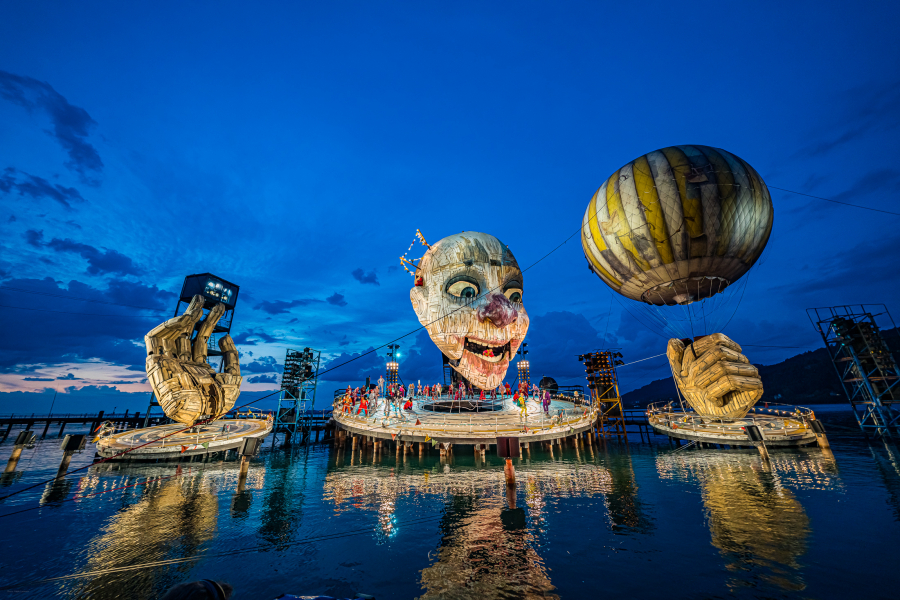
Opera stage at the 2021 Bregenzer Festspiele, scheduled to take place next July. Photo: Bregenzer Festspiele
With a capacity of over 7,000 people, the Seebühne is open Monday to Friday. The Seebühne's floating stage has undergone various transformations over the years and is always one of the most popular attractions at the Bregenz festival.
Arena di Virona (Italy)
Located in Verona, Italy, Arena di Verona was built in the 1st century primarily to host large-scale opera performances. The theater is one of the most well-preserved ancient structures made of white sandstone in the boot-shaped country. Arena di Virona is the third largest ancient amphitheater, after the Colosseum and the Capua Theater. It regularly hosts performances and games: from Roman lion fights, medieval horse races to modern-day open-air opera performances.

Outdoor performance at Arena di Virona. Photo: Joy Della Vita
Today, the arena hosts outdoor opera performances. The arena has seating for the audience, but many visitors prefer to sit on the stone steps above to relive the old days.
Auditorio de Tenerife (Spain)
The work of architect Santiago Calatrava resembles a ship with full sails. Inside, there is a large symphony hall and an auditorium. The highlight of the auditorium is the amazing acoustics produced by 3,835 sound tubes placed on both sides. This modern building is considered the most important symbol of Spain.
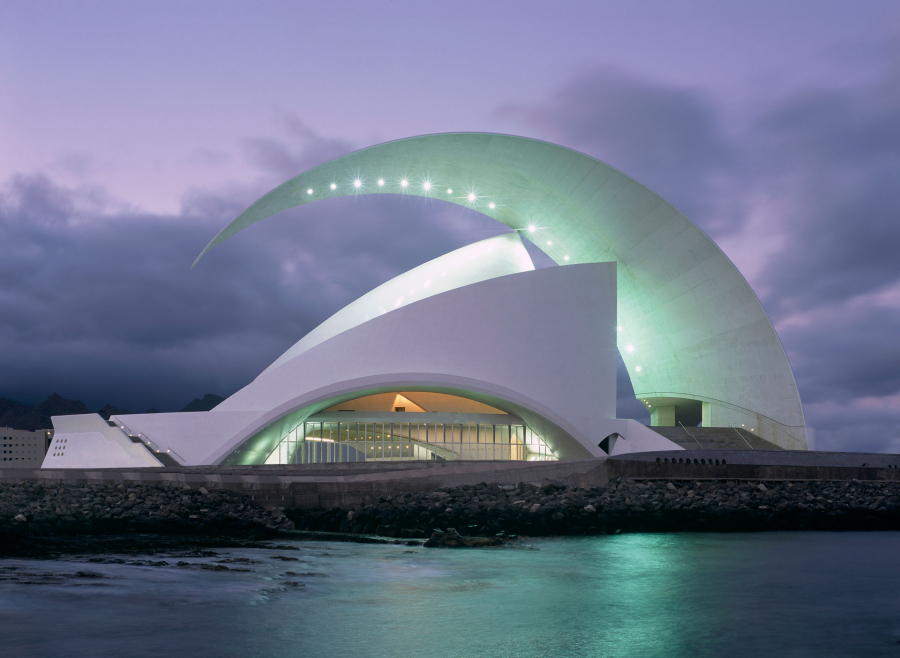
The theater's architecture resembles a ship with full sails. Photo: Calatrava
Ermita de la Santa Cruz Theater (Guatemala)
The theatre was founded on an ancient church, with only the facade remaining. Since 1973, this facade has been used as a backdrop for outdoor performances. The theatre has a special underground orchestra room, with musicians sometimes climbing onto the roof during performances.
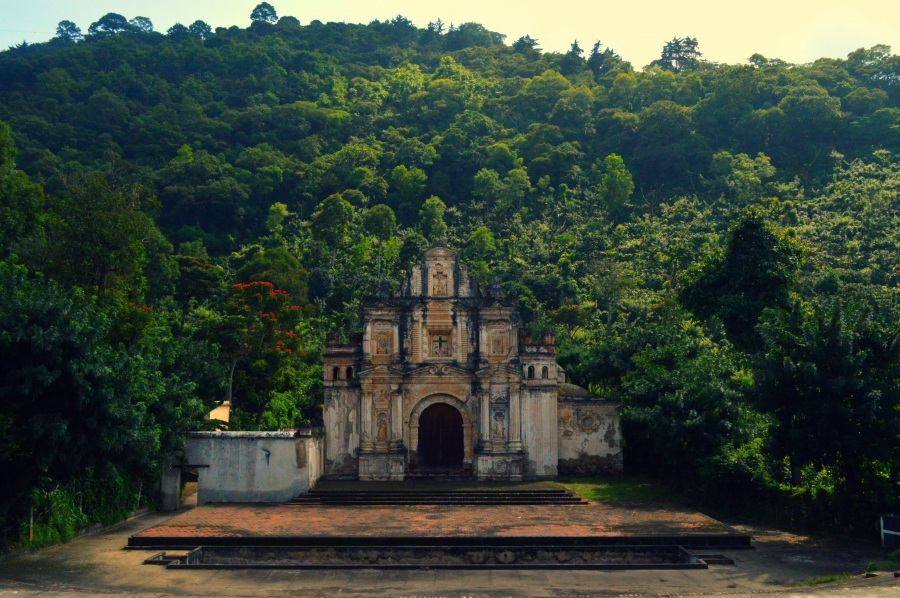
The theater's foundations come from an ancient church, with only the facade remaining. Photo: Internet
Oslo Opera House (Norway)
The opera house is partially submerged and from a distance resembles an iceberg floating on the sea. This magnificent building, made of marble and glass, hosts operas and other cultural events. The building's most prominent design feature is its sloping roof that rises from the waters of the Oslo Fjord, creating a public plaza above. Visitors can stroll on the rooftop terrace and enjoy views of Oslo.
The building is decorated with eight art projects. Highlights include Olafur Eliasson's perforated wall panels and a main stage curtain that evokes pressed aluminum panels.
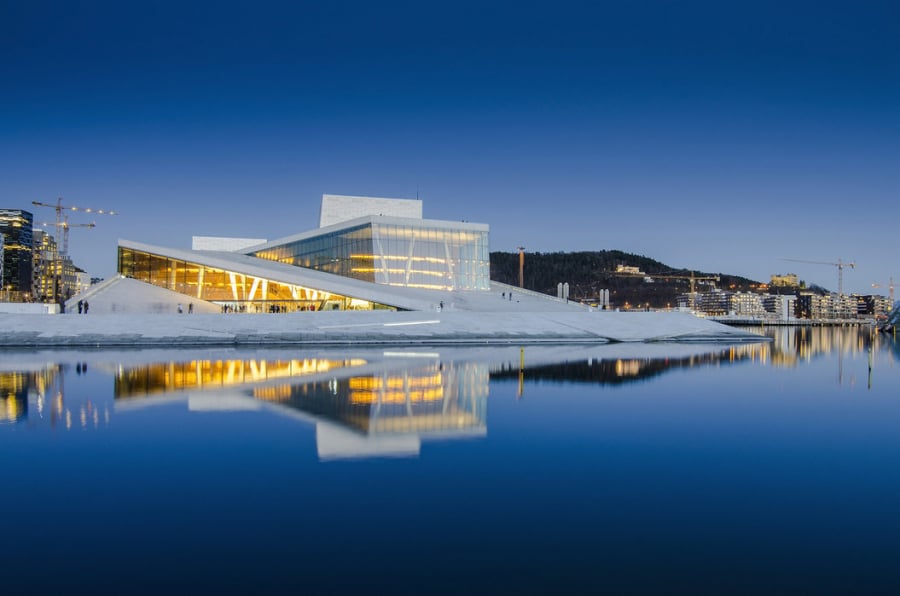
The theater is partially submerged and from a distance looks like an iceberg floating on the sea. Photo: Internet
Esplanade Theatres (Singapore)
Located on the waterfront along Marina Bay, the Esplanade is Singapore's most spectacular performing arts complex. The main theatre has a capacity of 2,000, modeled after the classic European horseshoe-shaped opera house, and is the largest stage in Singapore.
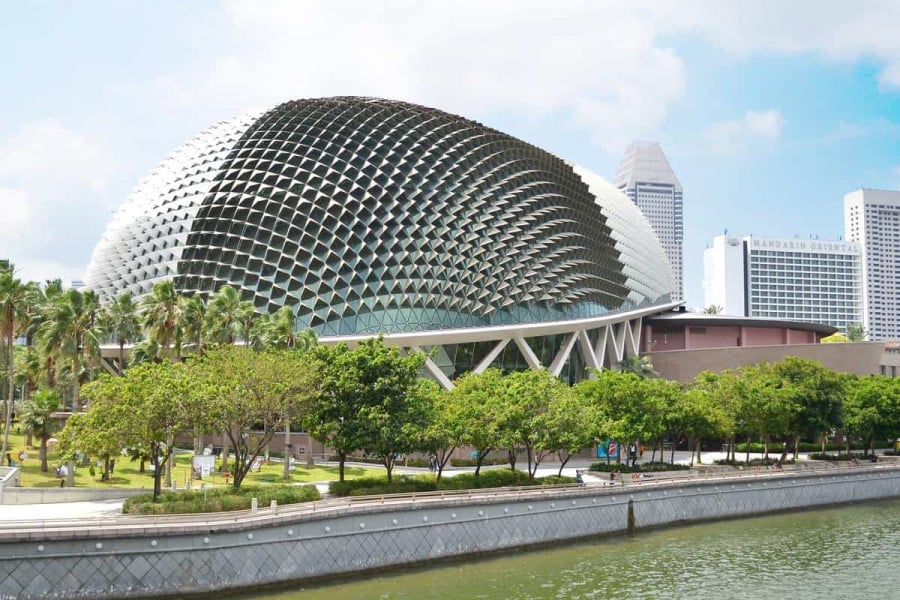
"Durian" Theater in Singapore. Photo: Internet
Architects in Singapore designed the theater with the idea of a microphone in mind, but visitors have interesting associations with this place. The twin domes that appeared in Marina Bay in 2002 have been compared to marshmallows, papayas, anteaters... Eventually, they were nicknamed "durians" by the locals. The theater has one of the best concert halls in the world in terms of acoustics.
Guangzhou Opera House (China)
The theater is designed with a unique architecture, like two sparkling pebbles on the banks of the Pearl River. With a capacity of 1,800 seats, the main theater area is equipped with the latest sound technology, a 400-seat auditorium with a massive entrance and function rooms.
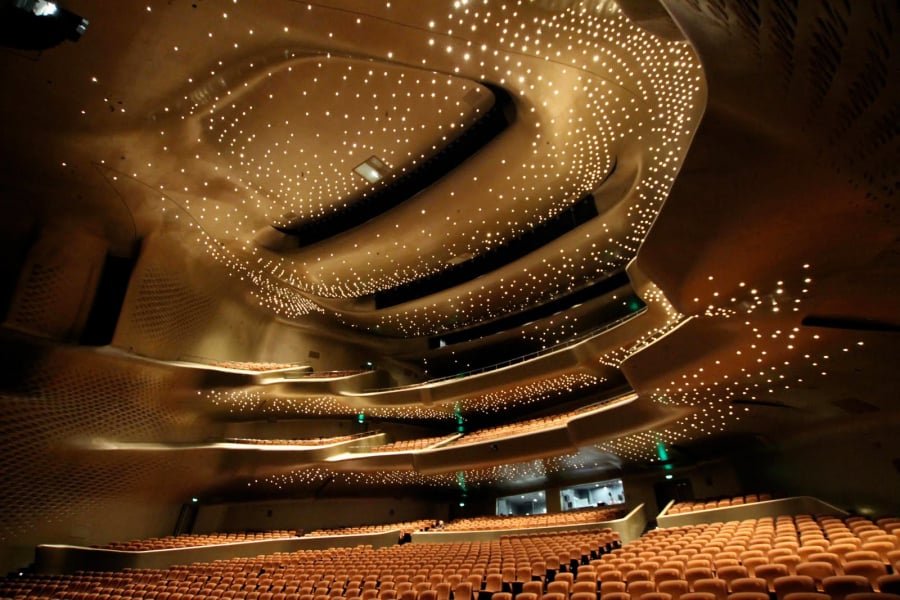
The interior of the theater is designed with beveled edges, zigzag lines and a brilliant lighting system. Photo: VINAARC
The interior of the theater is designed with beveled edges, zigzag lines, and equipped with modern materials such as soundproof and heat-insulated glass, stainless steel, high-grade stone, etc. In addition, the combination with modern lighting technology has created brilliant angles and surfaces inside the theater like a sparkling diamond.
Dalhalla Theatre (SWEDEN)
The theater's name is a combination of the Valhalla palace in Norse mythology and the province of Dalarna. The stage was built in 1993 from an old limestone quarry. A clear emerald lake serves as a natural backdrop. The stage's sound system is as good as that of famous European theaters. Every summer, the theater hosts about 20-30 performances. Audiences coming here will enjoy the feeling of being in the wild space of the forest located more than 60 meters below the ground.
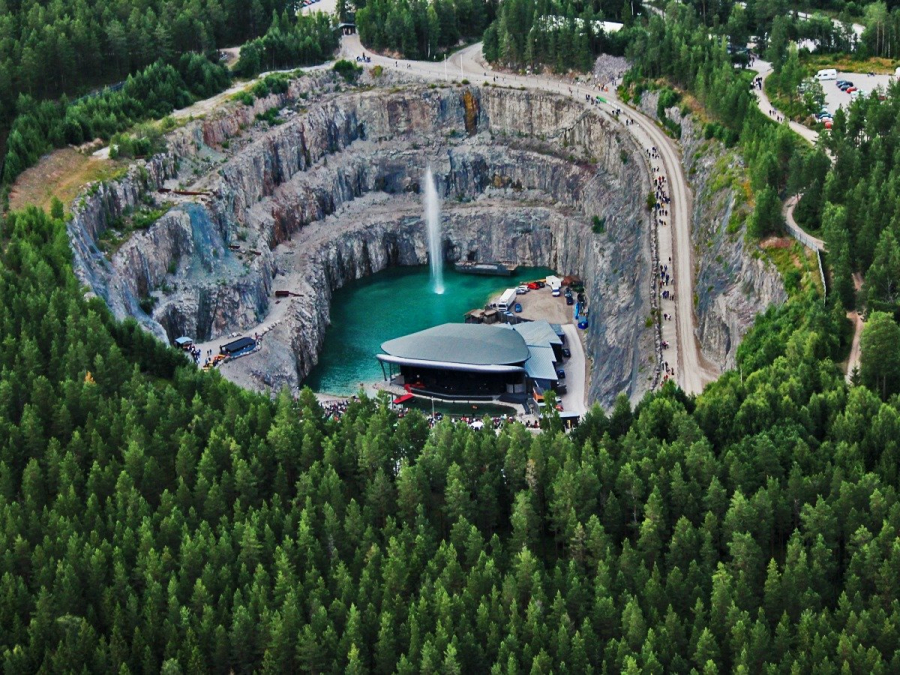
The stage background was built from an old limestone quarry. Photo: Internet
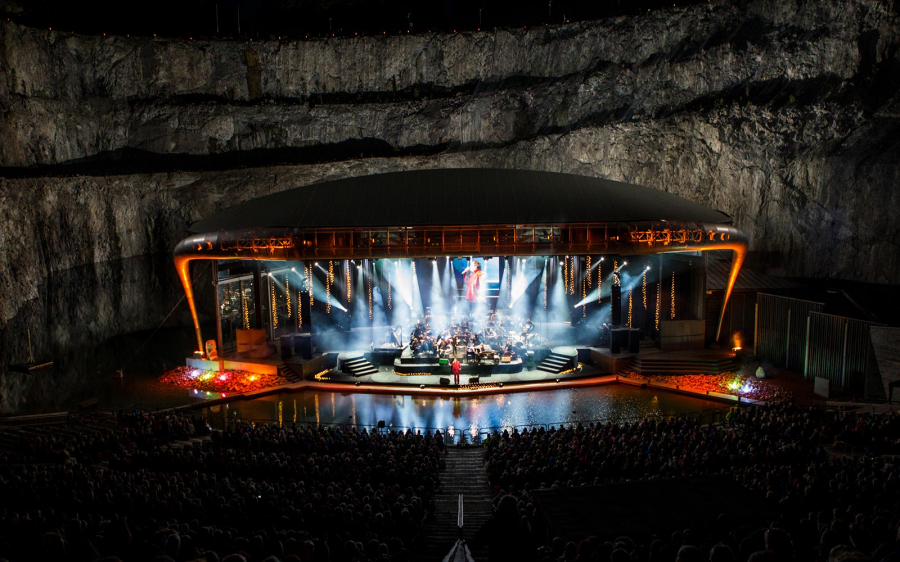
The stage is located 60 meters below ground level. Photo: Internet
Downtown Albany Performing Arts Center (USA)
From a distance, the theater looks like half an egg placed on a stand. That's why it's also called the Egg Theater. The theater has a total of 6 underground floors, including 2 halls inside.
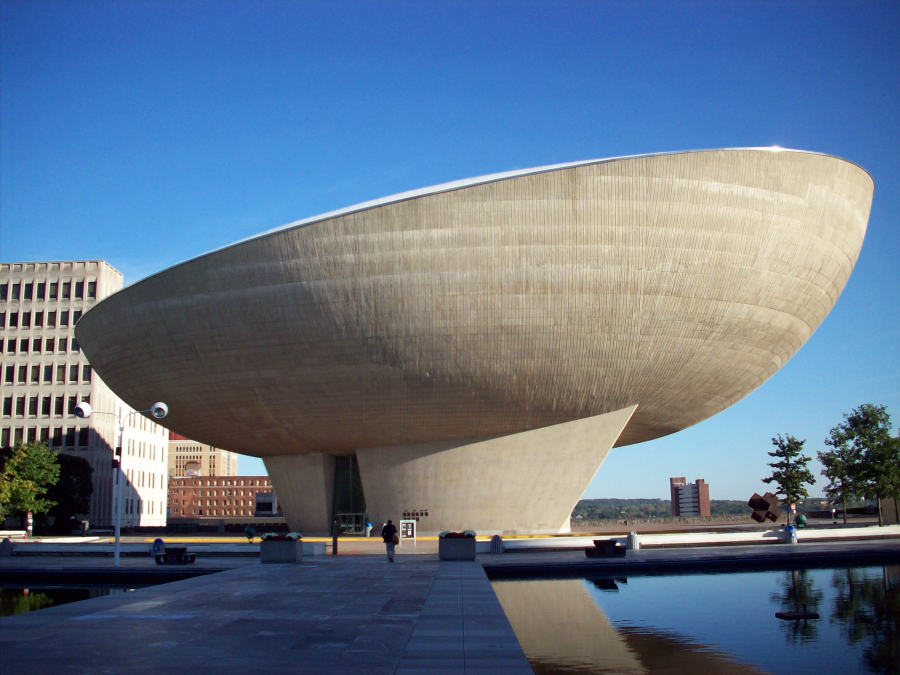
The theater looks like half an egg placed on a stand. Photo: Internet
Sydney Opera House (Australia)
This opera house is one of the tourist icons of Australia. The roof has a shell-shaped architecture, symbolizing the image of a ship with sails full of wind stretching out to sea. Architect Utzon said the design idea came to him while peeling an orange. It is said that if combined together, the 14 shells of the roof would form a complete sphere.
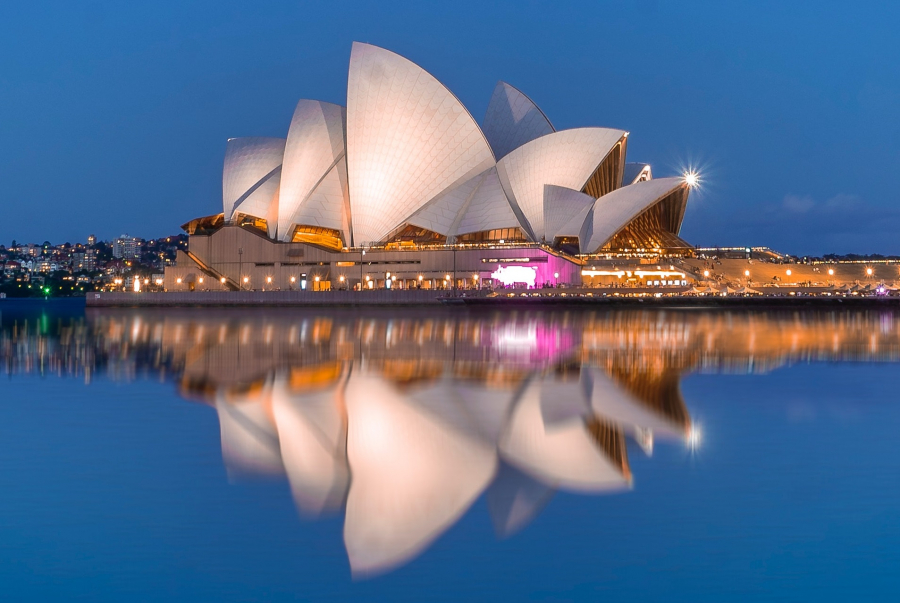
The Sydney Opera House was recognized as a World Heritage Site by UNESCO in 2007. Photo: Internet
Each of the opera house's large shell-shaped roofs is made of concrete blocks and covered with millions of self-cleaning white and cream tiles that sparkle in the sunlight. The domes are covered with colored crystal panels, which make the interior of the opera house shimmer and become more magical when exposed to sunlight. The opera house was recognized as a UNESCO World Heritage Site in 2007.





